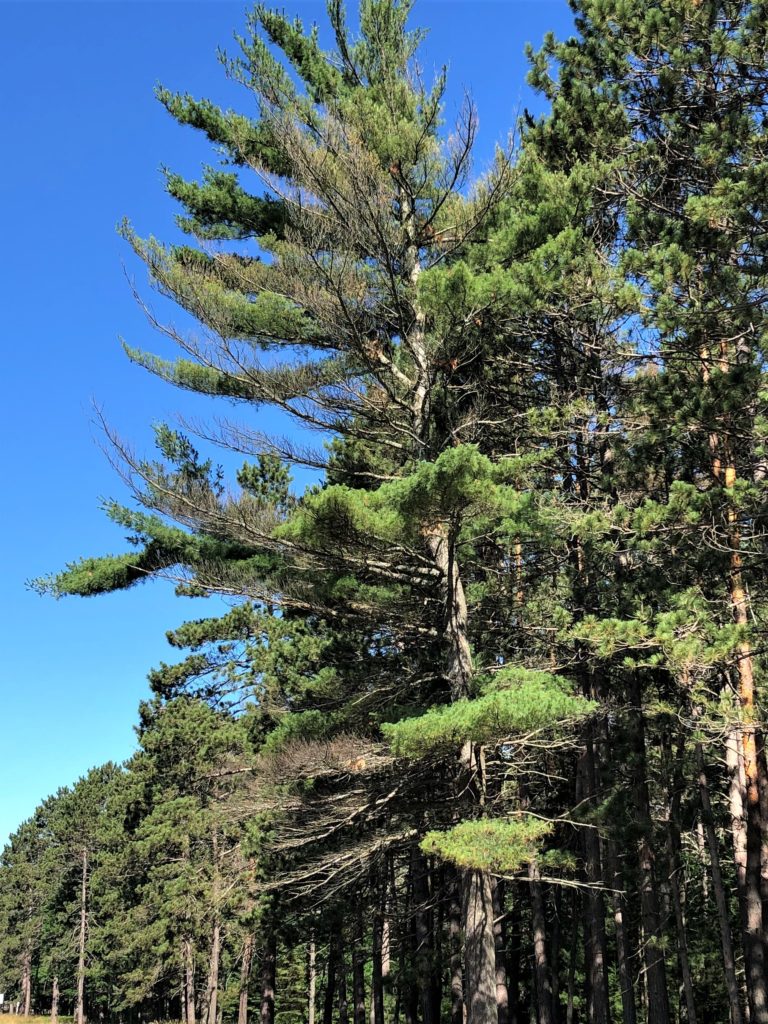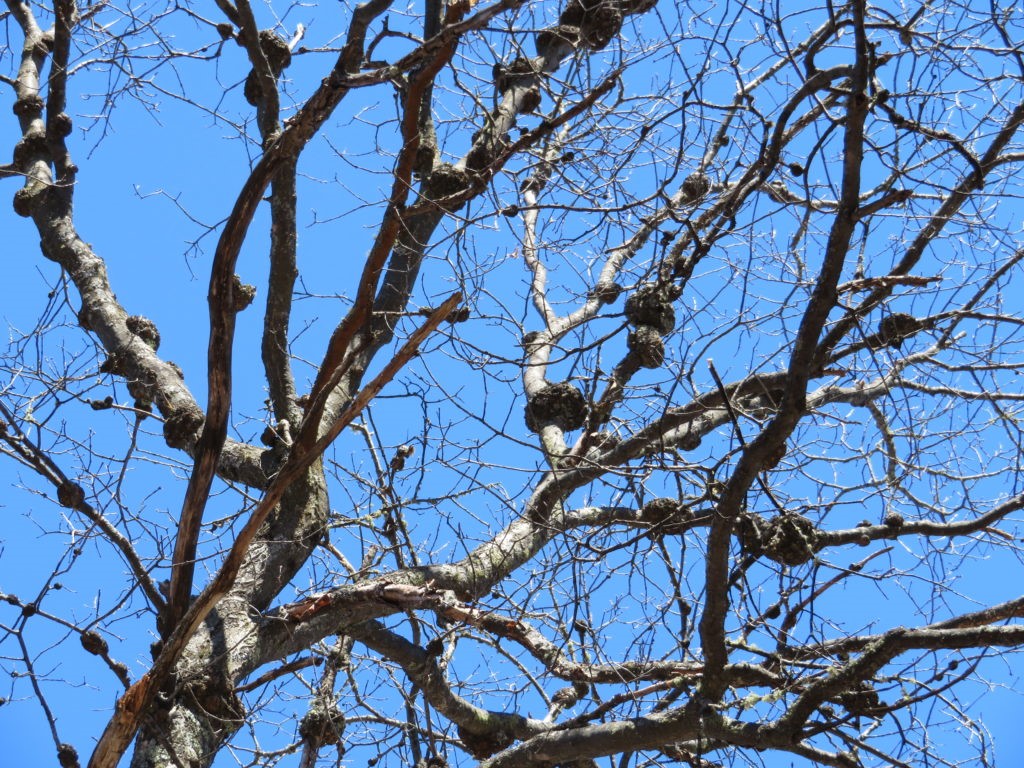By Elly Voigt, DNR Forest Health Communications Specialist and Linda Williams, DNR Forest Health Specialist, Linda.Williams@wisconsin.gov, 920-360-0665
The association between a tiny insect and an inconspicuous fungus is causing branch and sapling mortality. White pine bast scale (WPBS; Matsucoccus macrocicatrices) and Caliciopsis canker (caused by Caliciopsis spp.) are agents in an insect/disease complex impacting white pines (Figure 1).

Figure 1. Branch mortality caused by WPBS and Caliciopsis canker.
Continue reading “How to look for white pine bast scale and Caliciopsis canker”

